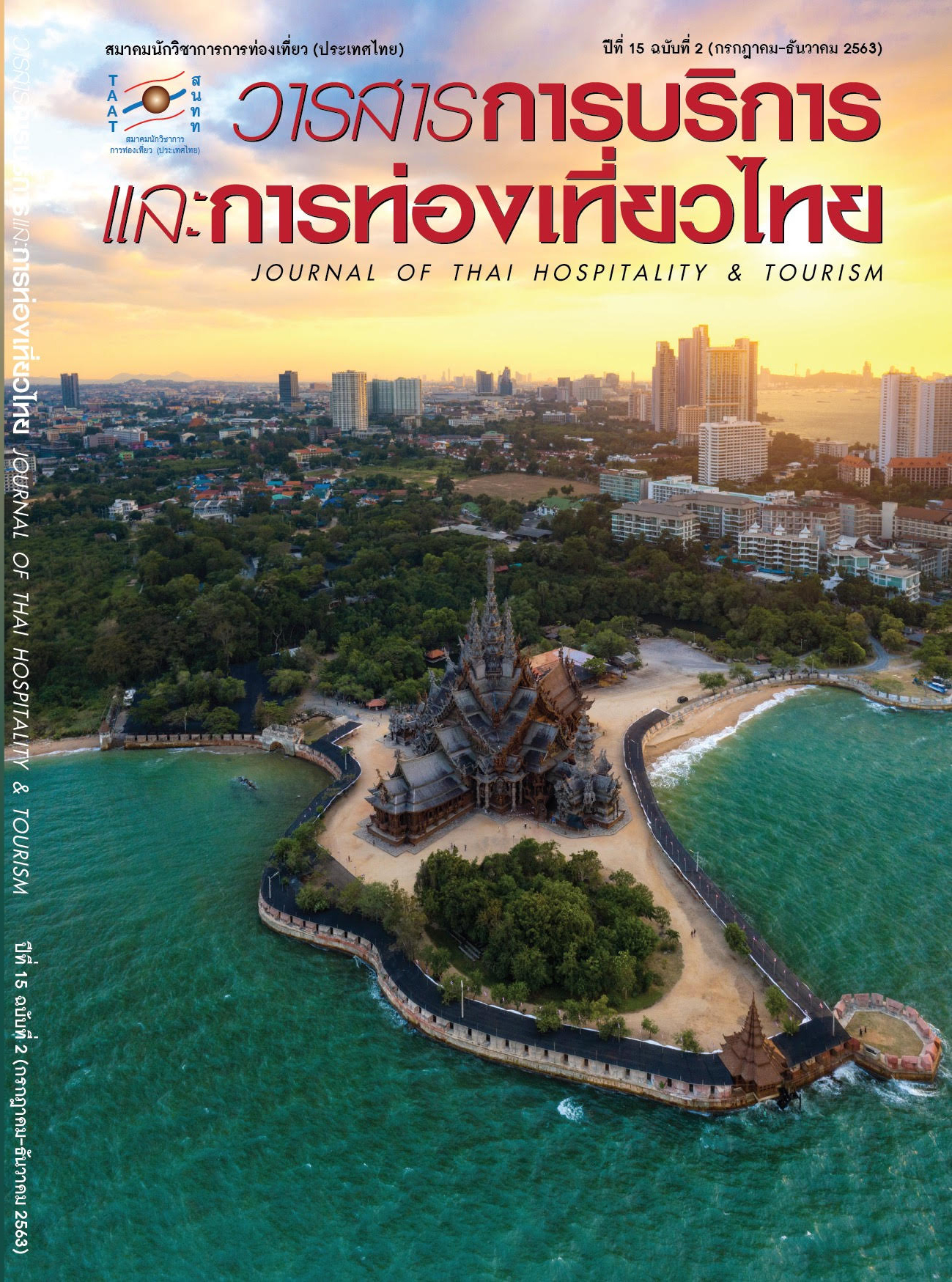The Way to Develop Bangkok to the City of Sustainable Shopping Tourism: A Case Study of Chinese Tourists
Main Article Content
Abstract
The objective of this research is to study Chinese tourist shopping behaviors finding the way to develop Bangkok to the city of sustainable shopping tourism: a case study of Chinese tourists. Data were collected by an in-depth interview with 20 key-informants from governances and private sectors. Data analysis was performed by content analysis.
The results showed that Chinese tourists are important to Thailand tourism industry in terms of the size of the population, tourism liking, diverse requirements, especially increasing purchasing power. As mention above, it will cause the long-term survival of related Thai entrepreneurs. However, the negative effect which may affect Thai tourism is the Zero-Dollar Tour and the impact on the difference in the environment and cultures of Thai and Chinese people.
Chinese tourists visiting Thailand prefer to buy souvenirs and consumer products. The most attractive products are food, cosmetics, herb, handmade products, Thai brand names, clothing, accessories, and various shows. The important way to increase the potential of doing business with Chinese tourists is to present the quality products, increase marketing promotion, be uprightness and develop communication skill for staffs, add facilities, have diversified products and services, especially to create a common understanding to Thai people and tourists’ service provider for decrease bias towards Chinese tourists, etc.
Article Details
References
Choi, T. M., Liu, S. C., Pang, K. M. & Chow, P. S. (2007). Shopping Behaviors of Individual Tourists from the Chinese Mainland to Hong Kong. Tourism Management, 29(4), 811–820.
Conrandy, R. & Buck, M. (2007). Trends and Issue in Global Tourism 2007. Berlin Heidelberg: Springer–Verlag.
Engel, J. F., Blackwell, R. D. & Miniard, F. W. (1968). Consumer Behavior. 8th ed. Fort Worth: the Dryden Press.
Kotler, P. (1997). Marketing Management: Analysis, Planning, Implementation and Control. 9th ed. New Jersey: A Simon & Schuster.
Lonelyplanet. (2015). Shopping. Retrieved March 18, 2016, from http://www.lonelyplanet. com/thailand/shopping.
McIntosh, R. W., Goeldner, C. R., & Ritchie, J. R. B. (1995). Tourism: Principle, Practices, and Philosophies. New York: John Wiley & Sons.
Plog, S. C. (1974). Why Destination Areas Rise and Fall in Popularity. The Cornell Hotel and Restaurant Administration Quarterly, 4, 55–58.
Stanton, W. J. & Futrell, C. (1987). Fundamentals of Marketing. 8th ed. New York: McGraw– Hill Book


